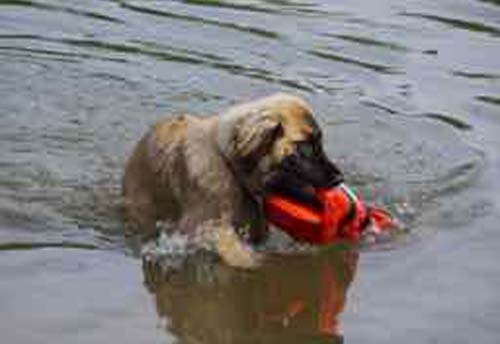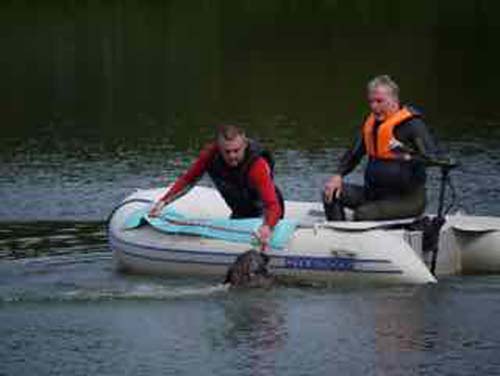
Leos are working dogs and enjoy working no matter what the work but one of their favourite ways of using all that energy is by swimming when given the chance even if it is only round the kitchen in their “drinking” water. Why not give them a chance to try it properly by starting them with a water training group.
If you have the idea that water training is all about taking tests and being very formal in training as it is in other disciplines such as obedience then stop and think again, the main emphasis is placed on having fun for both dog and owner in a safe manner. There is no pressure to take tests you can come along and just swim your dog, but it is great to see the look of pride on the handlers face when they take a test and pass.
We have heard all the excuses from I don’t swim, to my dog doesn’t like the water, but I have yet to find any one with a reason why their dog shouldn’t enjoy themselves.
The most important thing we concentrate on is to have fun in a safe way when you are in the water with your dog. So first and foremost a dog is taught that it is not fun for their owner to be jumped upon by a big hairy dog and that when they swim out to them instead of jumping on them they must swim gently round them. This first lesson becomes the grounding for everything that is taught in water work and will first be taught in shallow water where the handler can stand slowly progressing to the deeper water. This may sound stuffy to many people but people in deep water and big dogs climbing on them do not mix.

We are often asked how old a dog has to be to start water training the answer to that is, get the dog used to the water as early as you like but do not rush things, a little and often is the best way, let your dog get it’s confidence before you go on to anything else. Think back to when you started swimming and how you splashed around at first, your dog will probably do the same just let it take its time if you force it into the water you may put it off for life.
During the training sessions you may be helping others to practice for tests by being the “victim” in the water or possibly just holding another dog on the shore while the handler is in the water. At the end of the day it is the complete group that will help the dogs to have fun at the same time allowing their owners to display a certificate of their achievement.